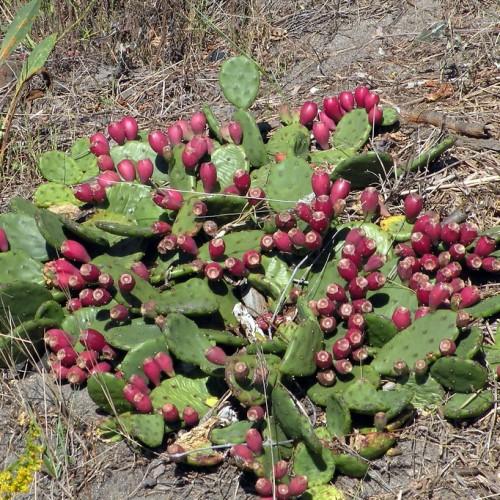
prickly-pear
Opuntia humifusa
Cycle:
Herbaceous Perennial
Watering:
Minimum
Hardiness Zone:
4 - 9
Flowers:
Flowers
Sun:
Full sun
Fruits:
Fruits Ready In Fall
Edible:
Yes
Growth Rate:
Low
Maintenance:
Low
Salt Tolerant:
Yes
Thorny:
Yes
Invasive:
Yes
Care Level:
Medium
watering
Water prickly-pear (Opuntia humifusa) plants lightly every 2-3 weeks in late spring and summer. During the winter months, plants should be watered only if the soil is dry—in most cases, no more frequently than once a month. When watering, make sure the water reaches the roots and does not sit on the top of the soil or accumulate around the base of the plant. Too much water can cause roots to rot. For best results, water early in the morning and try to avoid getting the leaves wet. If the leaves are wet, allow them to dry off before the sun comes out. Prickly-pear plants enjoy warm, sunny locations and should be kept in areas with consistent temperature and good light levels.
sunlight
Prickly-pear (Opuntia humifusa) is an evergreen flowering plant species that requires approximately 8 hours of direct sunlight per day. In summer and spring, it is best to provide this plant species with morning light and filtered afternoon light to prevent sunburn on the foliage. In winter and fall, when the light is at its weakest, it is still necessary for the Prickly-pear plant to have access to 8 hours of direct sunlight. When this plant is grown in a greenhouse, supplemental lighting will be necessary to meet its daily sunlight needs. Prickly-pear prefers the sun during early mornings and late afternoons to get the most benefits without becoming overheated.
pruning
Prickly-pear (Opuntia humifusa) should be pruned twice a year - in early spring after new growth begins, and again in mid-summer when flowering begins. Pruning should be done carefully, as the plant has spines that can cause injury. During the early spring pruning, cut back the older canes to encourage new growth and remove any dead or damaged branches. In mid-summer, reduce canes to 1 to 3 if unruly to maintain a compact shrub form and reduce overcrowding. In addition, any branches that have finished flowering should be removed. When pruning prickly-pear, use pruning shears, gloves and protective eye wear to avoid any injuries.
